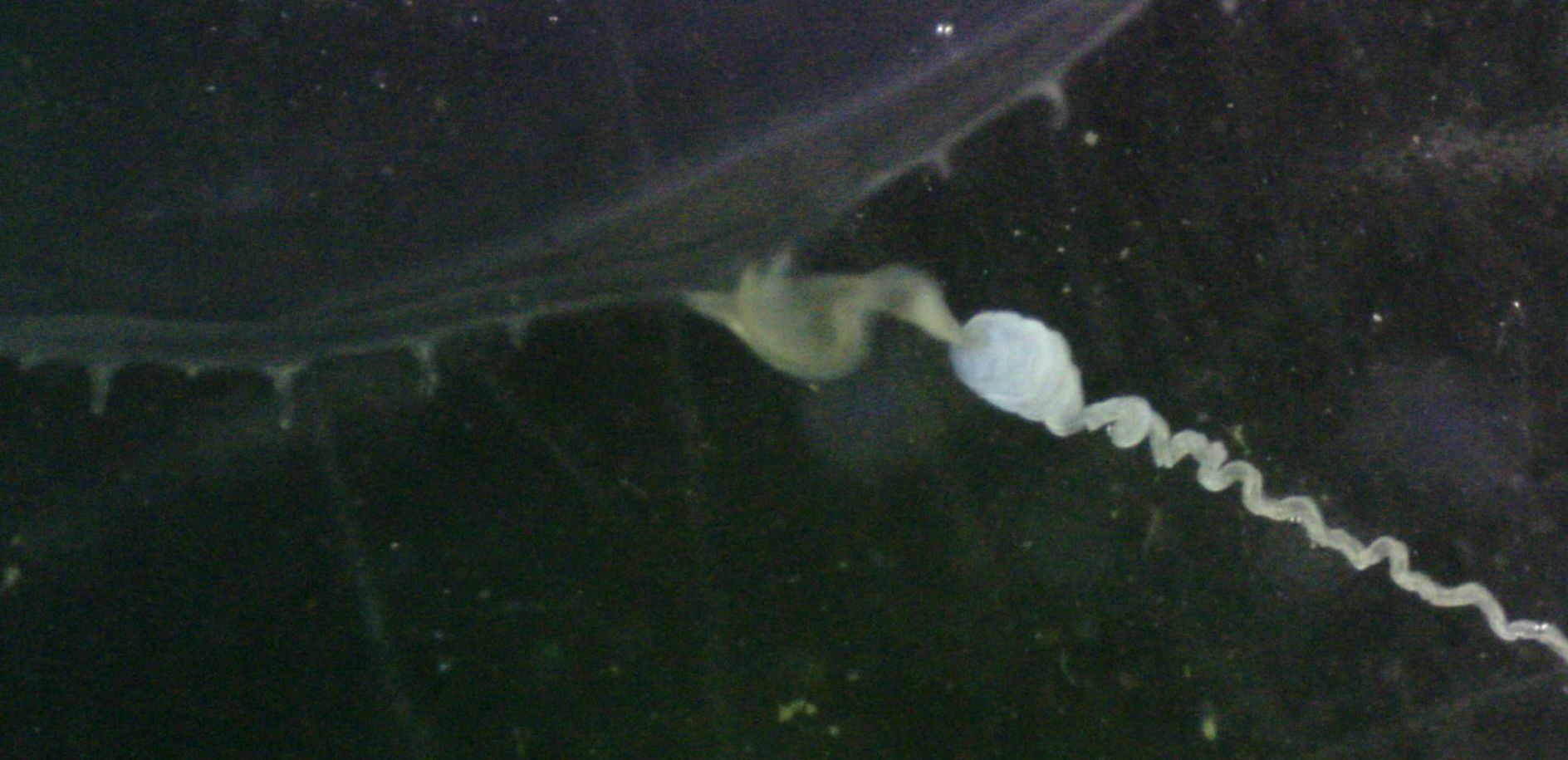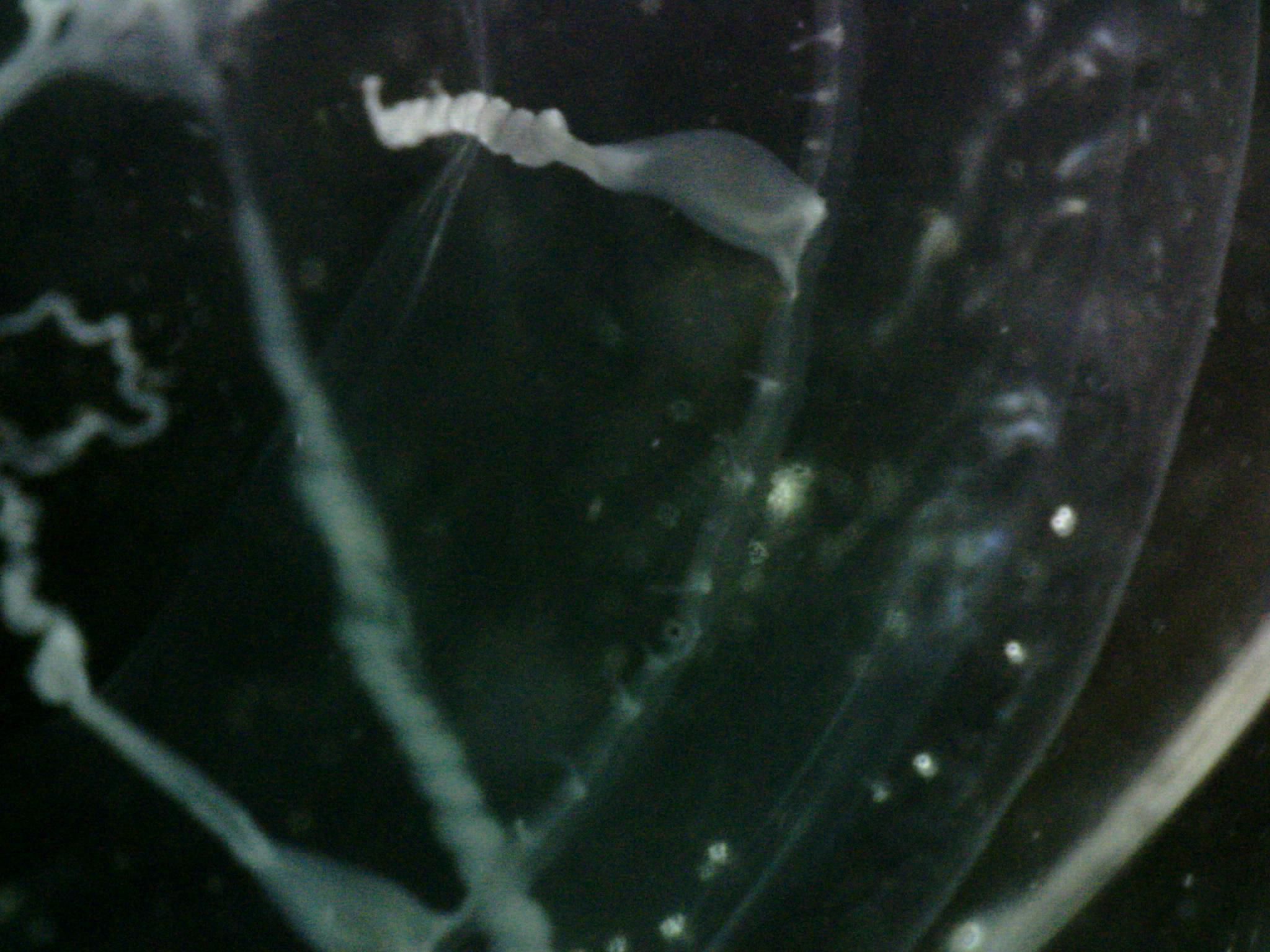Tiaropsidium kelseyi Torrey, 1909Common name(s): |
|
| Synonyms: | 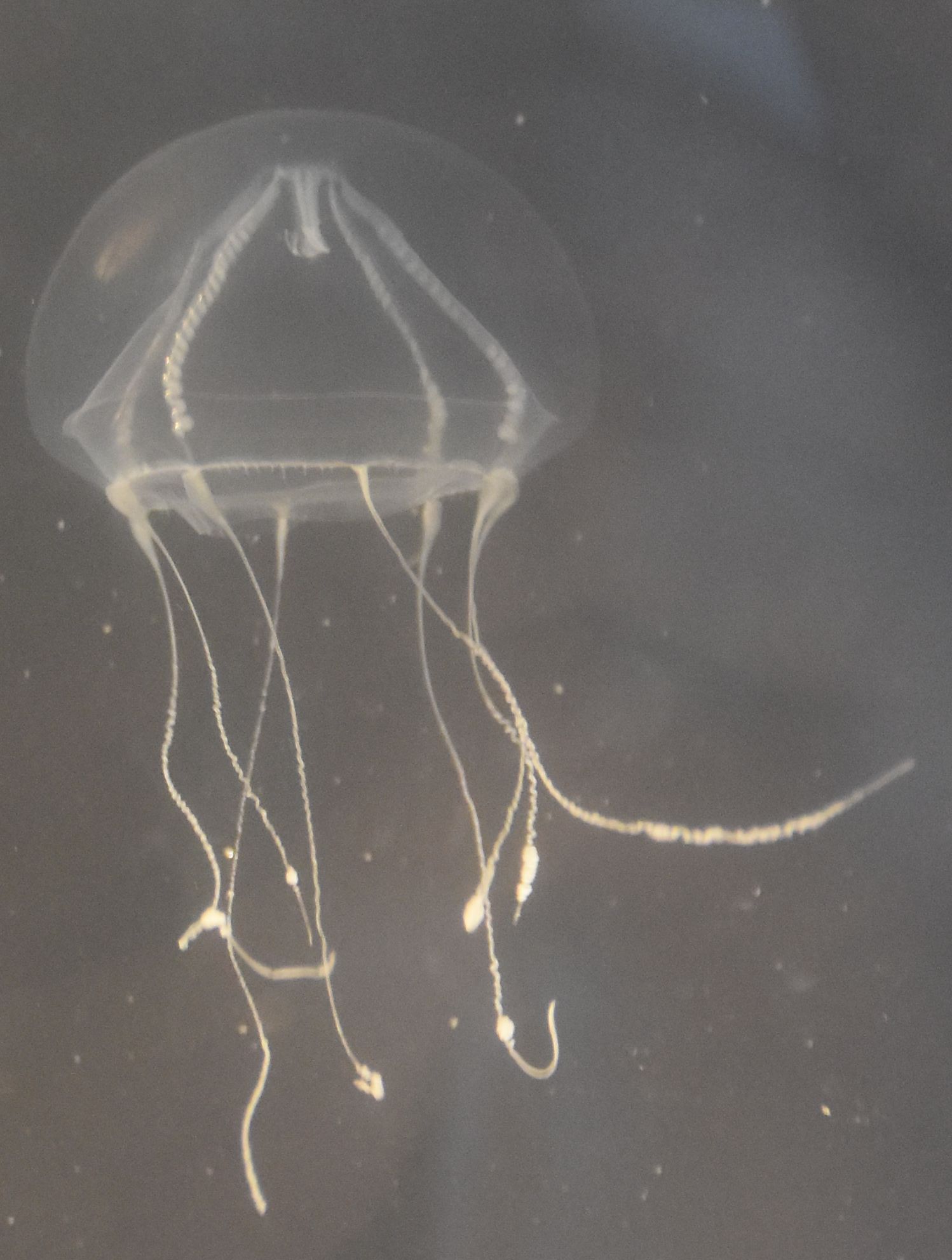 |
|
Phylum Cnidaria
Order Thecata
Family Tiaropsidae
|
|
| Tiaropsidium kelseyi, about 4 cm in diameter | |
| (Photo by: Dave Cowles, Jule 2025 ) | |
Description: The bell is approximately as high as it is wide. The manubrium is short with only slightly frilled lips (photo) and does not hang down below the bell margin. The 4 radial canals do not branch nor do they have lateral diverticula. The gonads are sinuous and tightly connected to the 4 radial canals throughout most of their length, but not to the manubrium (photo) . The 8 or 16 large, highly extensile, unbranched tentacles originate at the margin of the bell and are evenly distributed from tentacle bulbs around it rather than originating in clusters. Four of the long tentacles originate at the ends of the radial canals and 4 originate between them. Many more short, rudimentary-appearing tentacles are distributed along the bell margin as well. There are no prominent rings of cnidocysts on either the long or the short tentacles. The elongated tentacle bulbs do not have ocelli but there are 8 black ocelli on marginal vesicles distributed evenly around the margin of the bell (photo). Up to 5-8 cm diameter. This specimen, collected by Jamie Fields at the Sharpe Cove dock at night, was colorless, about 4 cm in bell diameter, and could extend its long tentacles at least 15 cm. Some individuals may have a pale yellow or gray coloration.
How to Distinguish from Similar Species:Laodicea sp. has ocelli on the tentacle bulbs. Mitrocoma cellularia and Clytia gregaria have no ocelli.
Geographical Range: Pacific coast of North America, Vancouver Island to San Diego. Uncommon but can sometimes be observed near the docks in Friday Harbor, WA.
Depth Range: May range deep
Habitat: Pelagic, may be mostly oceanic
Biology/Natural
History:
| Return to: | |||
| Main Page | Alphabetic Index | Systematic Index | Glossary |
References:
Dichotomous Keys:Carlton, 2007
General References:
Wrobel
and Mills, 1998
Scientific Articles:
Web sites:
General Notes and Observations: Locations, abundances, unusual behaviors:
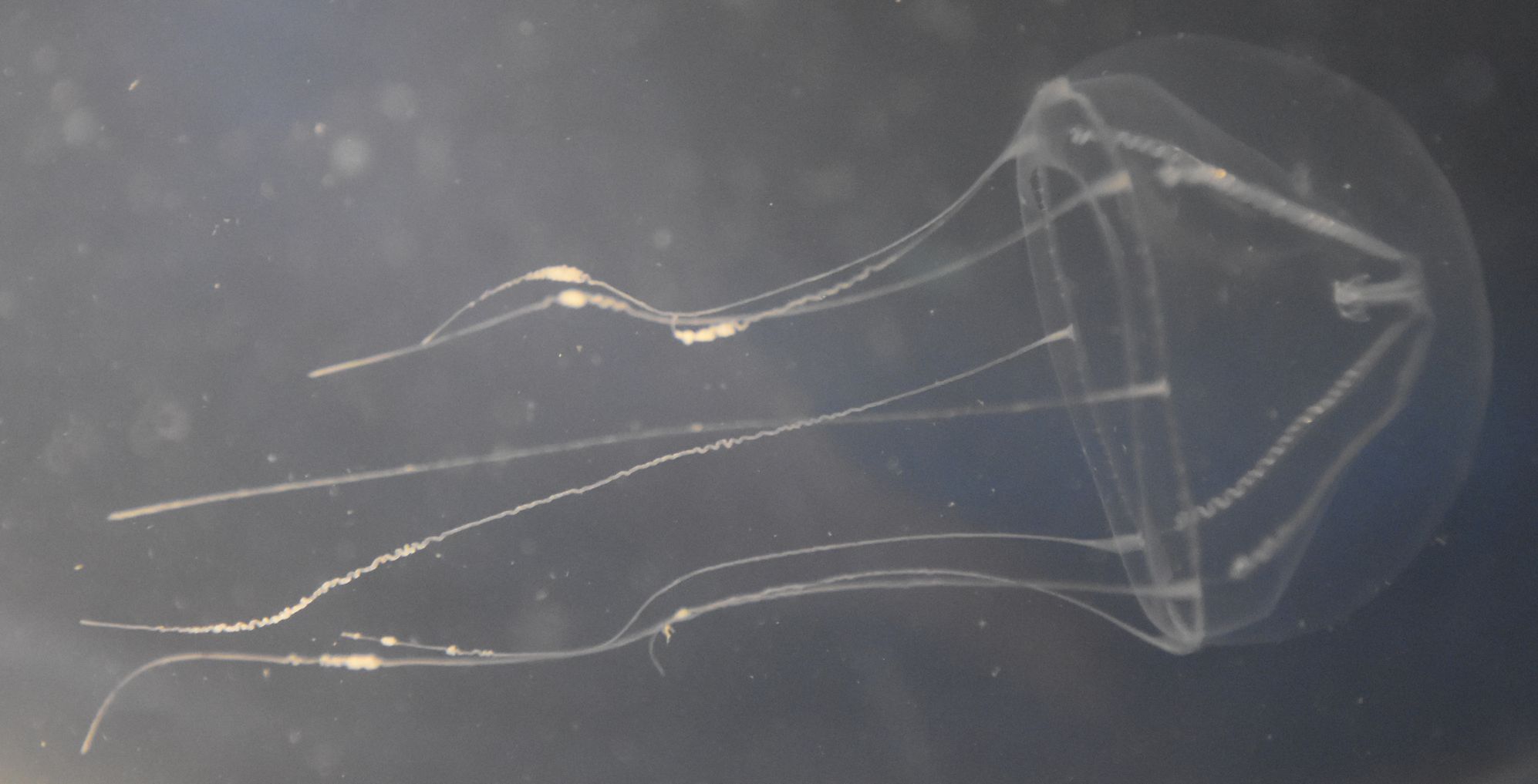
In this actively swimming individual the short, slightly frilled manubrium
and can be readily seen, as well as the 4 unbranched radial
canals with the sinuous gonads attached to them. Note that 4
long tentacles
originate from extended tentacle
bulbs near the ends of the 4 radial
canals, while 8 other long tentacles
(in this
individual) originate between them. The short, rudimentary-appearing tentacles
are too short to see in this view.
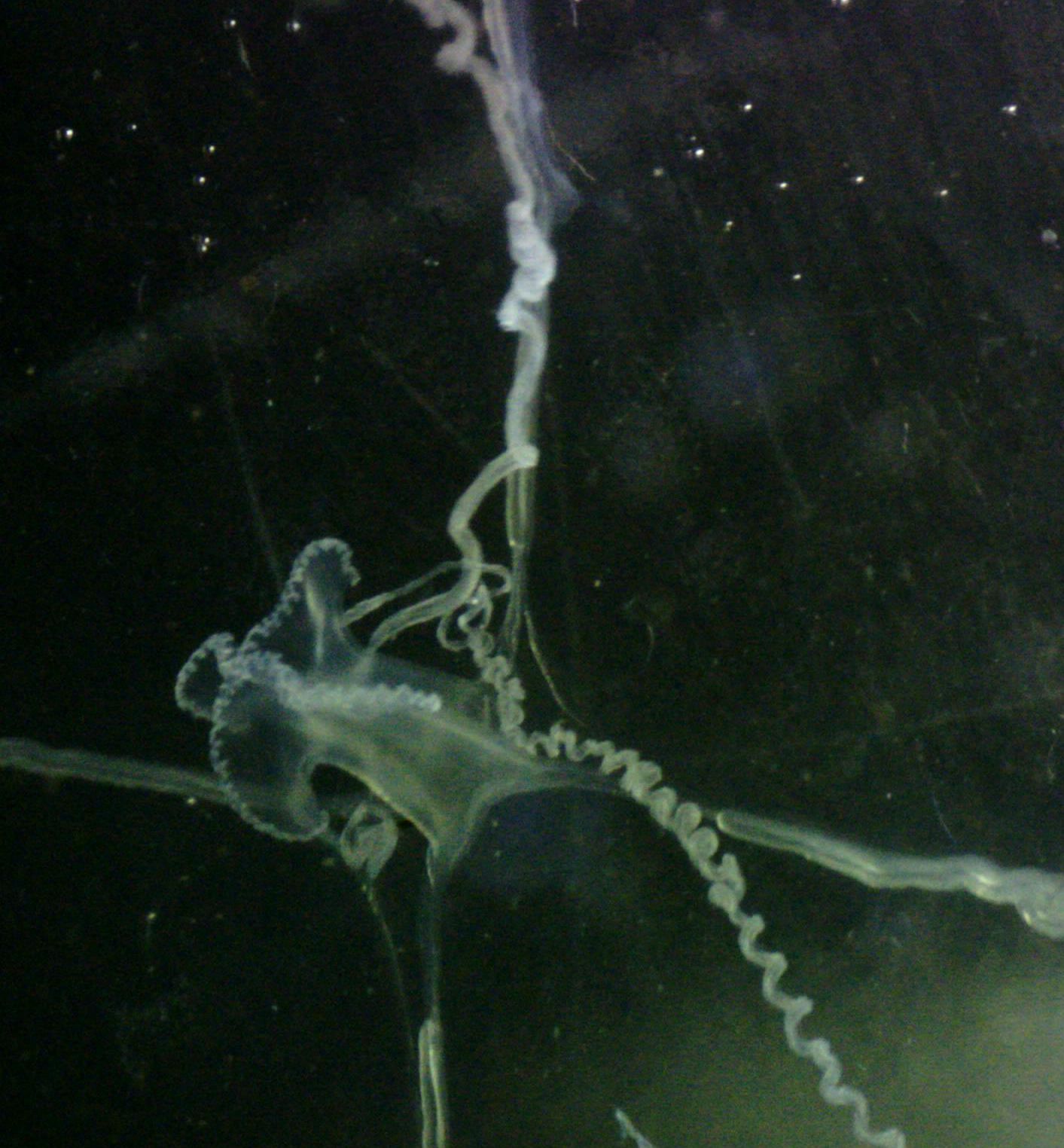
This closup of the subumbrellar
side shows the short manubrium
with slightly frilled lips, plus the bases of the 4 radial
canals. Note that the sinuous gonads start slightly out on
the radial
canals (they also end slightly before the canals
reach the margin of the bell).
The coiled structure angling down to the bottom right is a tentacle
that got wrapped into the subumbrellar
area. The tentacle is also
clinging to the upper
radial
canal.
This closeup view of the margin of the bell shows an elongated tentacle bulb with a long tentacle attached, plus a series of the short, rudimentary-appearing tentacles slong the bell margin. Photo by Dave Cowles, June 2025
This view of the bell
margin shows one of the small, black ocelli.
The well-developed velum
is also visible. Photo by Dave Cowles, June 2025
Authors and Editors
of Page:
Dave Cowles (2025): Created original page
CSS coding for page developed by Jonathan Cowles
Salish Sea Invertebrates web site provided courtesy of Walla
Walla University
